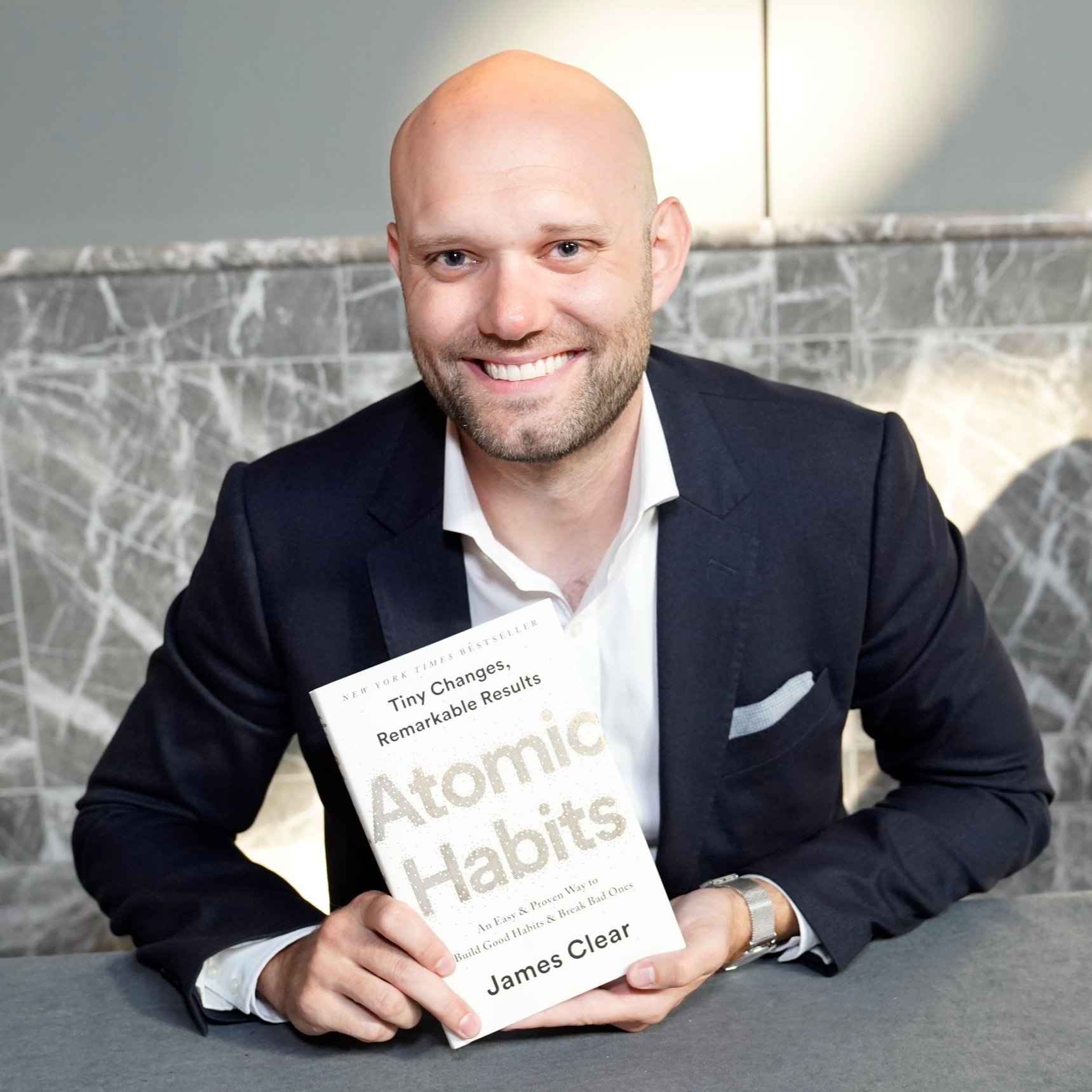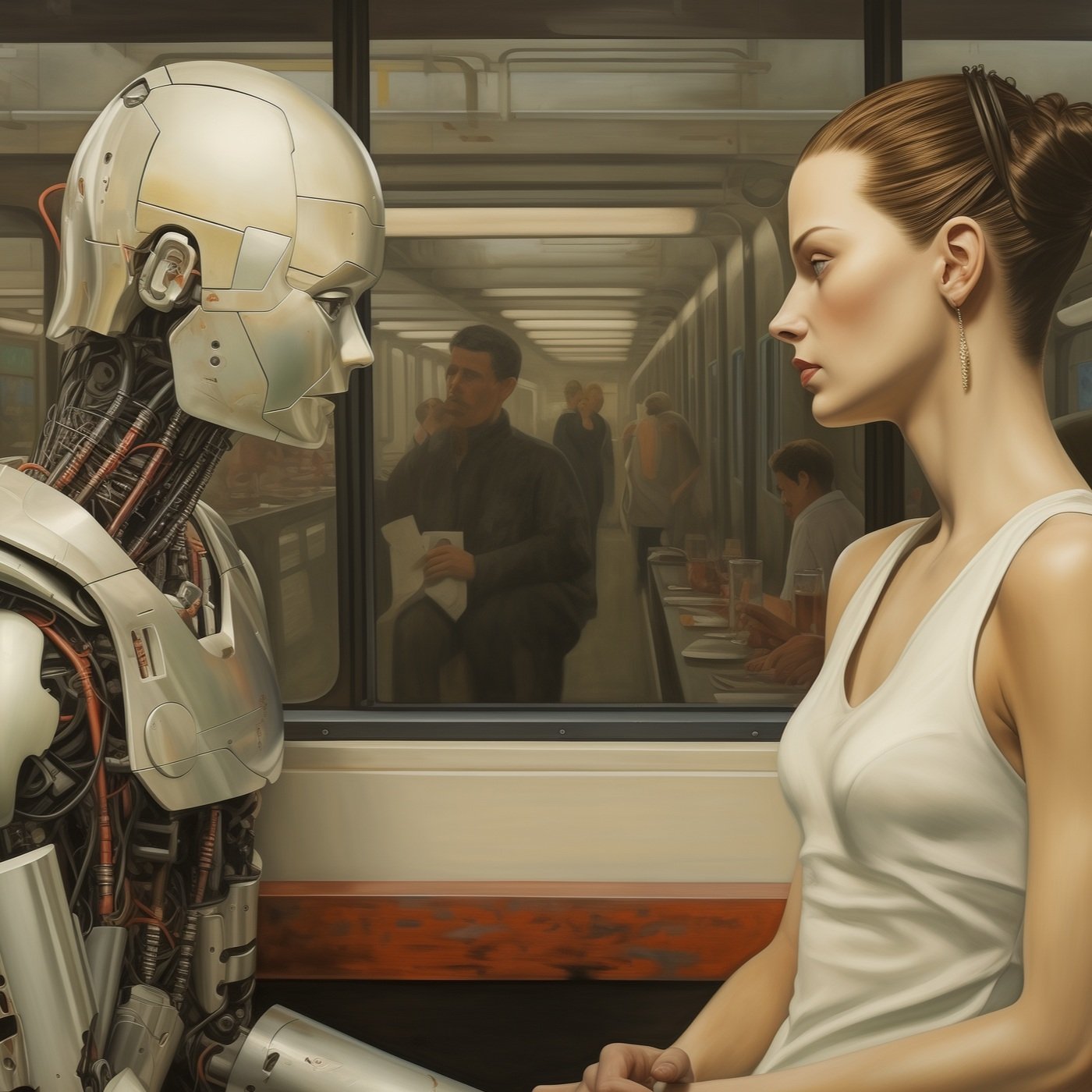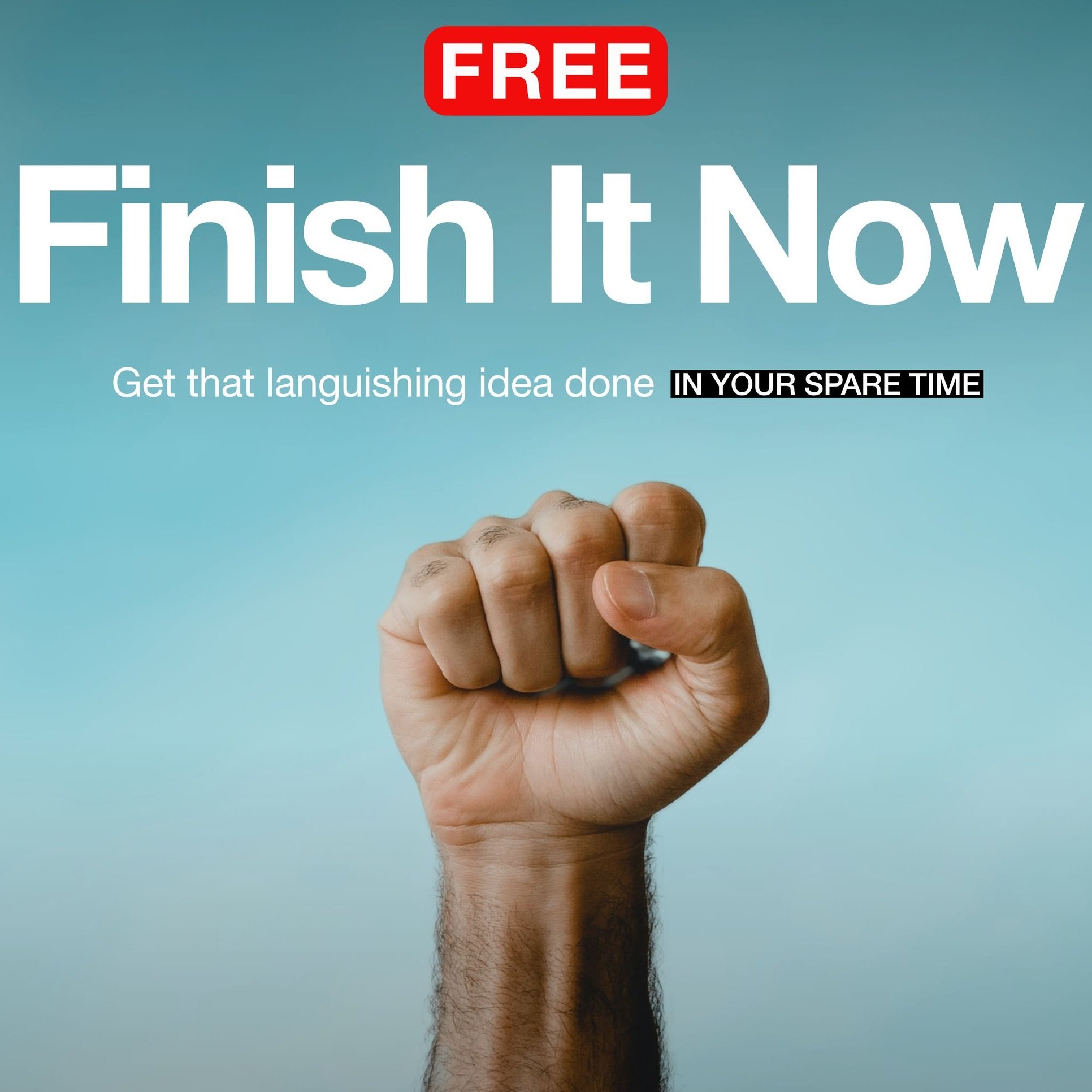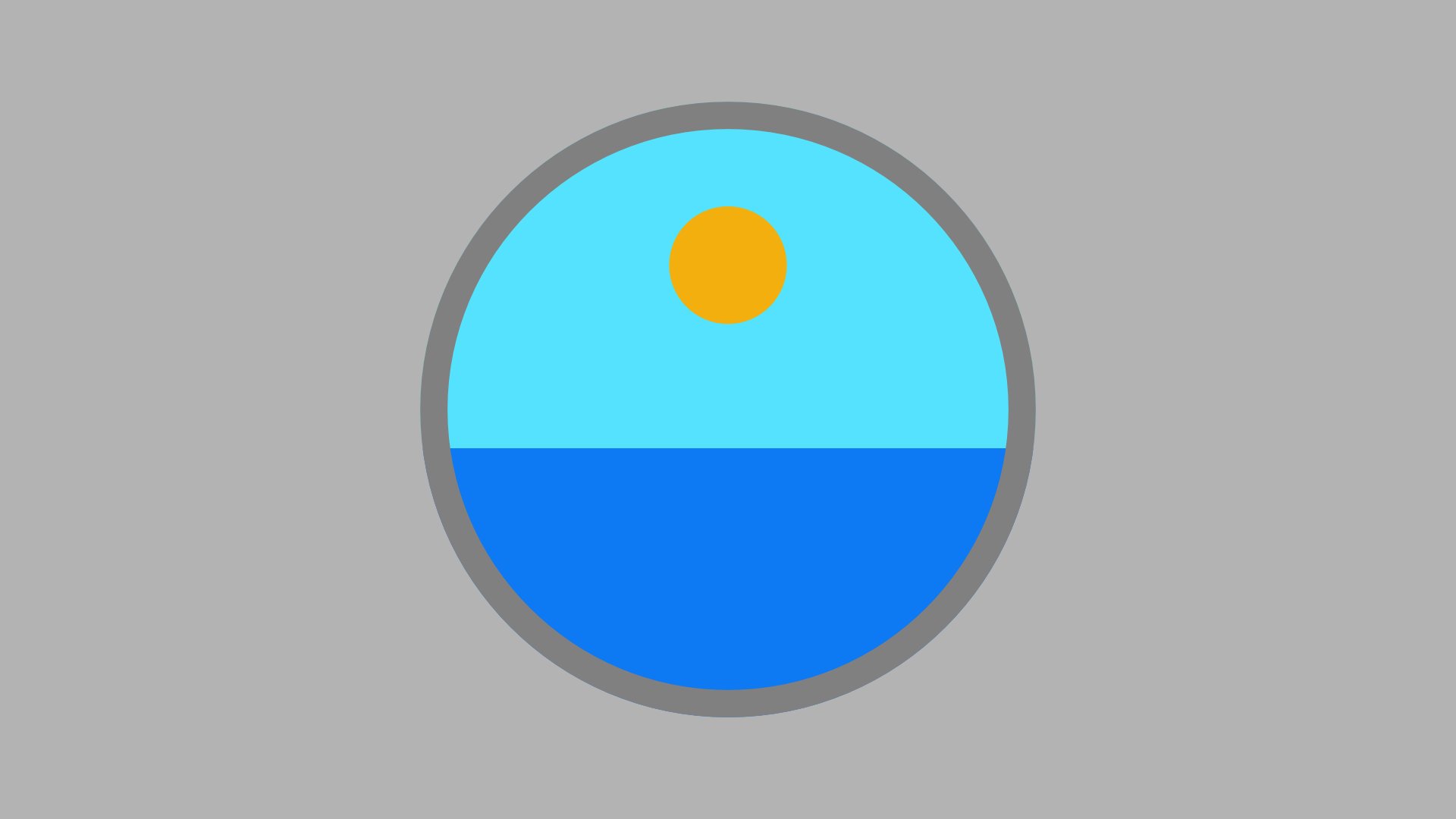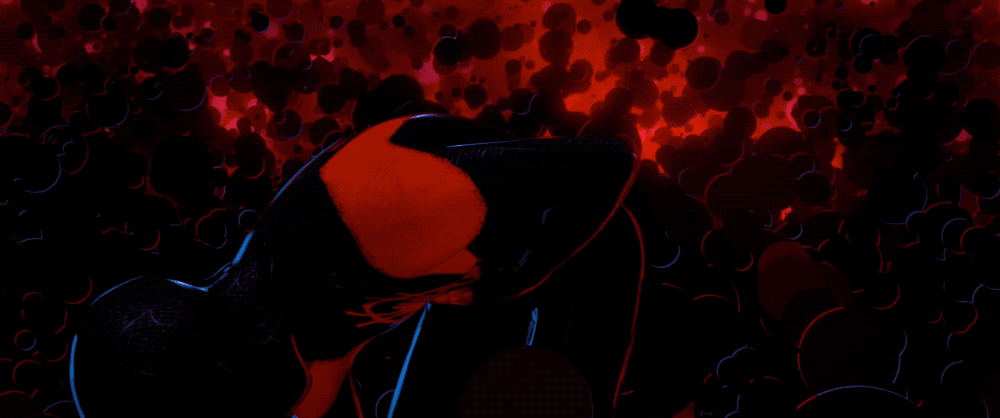Multiple Discovery
What if history's great innovators chose different paths and never made their breakthroughs? Would our world be different? Would we be further behind?
This is one of my favorite segments from the original Everything is a Remix series. It didn't fit in the new version, but I still wanted to update it and share it.
The Creative Apocalypse is Not Near
Image generated with Midjourney; type added by me
We are now about a year and a half into the age of generative AI. There was a lot of fear and anxiety heading into this era. I want to take a moment to assess what the reality of working with this software has been like, from a creative perspective.
Long story short: working with AI is a lot more work than everybody imagined.
Let's start with text.
The major theme of my course about creating content with ChatGPT is that you need to lead. You need to be creative and problem-solve to work around the serious limitations of ChatGPT.
ChatGPT writes generic, dull text, and it's hard for us to read more than a few paragraphs of this stuff without our eyes glazing over. The onus is on you to make that text work.
ChatGPT is a powerful and very worthwhile tool, but the area where it will have the most impact is gruntwork, the boring work you don't wanna do. Actual creative work? It can't do that.
Image generation is even more limited.
Image from The Polar Express, a film riddled with the uncanny valley effect
Much like there's the "uncanny valley" effect in CGI, AI-generated images feel empty and uninvolving. You can see one of these images at the top of this post. It’s fine for this modest purpose, but for higher-level work, it would seem "temp," like a placeholder. (It also looks like countless other images being pumped out all over the internet.)
But haven't I been using image generation? Yes, I've been experimenting and demonstrating what this software does. But, as I said in my course, I don't think image generation is ready for prime time yet. If AI art is going to work for you, it's your own creativity that will do the heavy lifting.
Text and image generation gives you raw ingredients, much more raw than what you would get from a human collaborator. And it takes a lot of imagination in your preparation to make these ingredients flavorful.
How James Clear Remixed a Blockbuster
James Clear poses with his bestseller, Atomic Habits
James Clear’s Atomic Habits is an absolutely monumental nonfiction bestseller. If you’ve only bought one nonfiction book in the last few years, there’s a good chance Atomic Habits is it.
The book is a remix of the work of countless others who’ve researched the psychology of habit formation. Clear is not sneaky about this at all and does a superb job of citing his sources.
Here are some of his biggest influences.
BJ Fogg’s Tiny Habits
The premise of Atomic Habits is similar to BJ Fogg’s Tiny Habits. Both are about how small habits can transform your life. Clear also writes about Fogg’s concept of habit stacking, which is when you link a new habit you’re trying to form to an established one.
Habits as compound interest
What good are little habits? Clear says these small actions create compound interest over time, just like small investments can reap huge rewards over decades. This concept is popular in lots of writing about habits, for instance, the long-running blog Zen Habits.
Charles Duhigg’s The Power of Habit
One of the most important sources for Atomic Habits is Charles Duhigg’s The Power of Habit. Duhigg broke habit formation into three steps: cue, routine, and reward.
Clear took these elements and transformed them into cue, craving, response, and reward. He kept the name “habit loop.”
Clear then presented his new model using this graphic from Nir Eyal’s Hooked as a template.
Nir Eyal’s Hook Model
Here’s James Clear's result. This concept is the foundation of Atomic Habits.
Clear’s Habit Loop
Csikszentmihalyi’s Flow State
One of the most influential concepts in self-improvement is Mihaly Csikszentmihalyi’s Flow. This is when an activity is just slightly beyond your abilties, leading to immersion and improvement. Clear reframes this idea as The Goldilocks rule, which is the same thing as flow, but Clear probably wanted to frame it in a simpler way.
Anecdotes from other nonfiction books
Clear’s anecdotes in Atomic Habits are often drawn from other nonfiction books. For instance, he uses a story about how photography students who focused on quantity rather than quality ultimately took better photos. This story came from Art & Fear by David Bayles and Ted Orland.
And Simon Sinek?
Again, Clear’s endnotes do a fantastic job of revealing how he wove his book together. But sometimes, he might go a bit far in his acknowledgments, as in the case of citing Simon Sinek’s Golden Circle concept from Start With Why.
Clear saw this.
Simon Sinek’s Golden Circle
Then created this.
Clear’s three levels of change
In this case, I’d say that design falls squarely in the public domain and no citation is needed
Clear’s secret ingredient?
Many of the books Clear remixes were successful, but none to near the level of Atomic Habits. What’s Clear’s secret?
I think the key was how Clear integrated all this knowledge into his own life. He directly practiced everything he learned and modified it to make it work better. He lived it and wrote about the experience.
Another formative influence on Clear was this tweet from the entrepreneur and investor Naval Ravikant: “To write a great book, you must first become the book.”
Feedback for my new ChatGPT and AI course has been fantastic! You can see a few testimonials from Hans, Jeff and Charlie on the landing page.
I'm now venturing into personalized coaching, consulting, and interactive teaching sessions. If you need deeper engagement, tailored guidance, or hands-on learning, this is how I can provide that. Head over to the contact page to get in touch.
Are We Creatively Losing It? And How Do We Get It Back? (Part 1)
The Rolling Stones in 2023
Are we, as a culture, in creative decline? If so, why and what can be done about it?
As many of you know, I’ve been thinking about this for a bit and I’m going to start sorting my thoughts here, in installments.
Let’s start with The Stones.
I love The Rolling Stones. Sticky Fingers and Exile on Main Street are as great as anything you’ll ever hear. As a young man, I loved them with a weird intensity, and I still love that music now. Lots of the stuff I loved when I was young doesn’t stand up. Their music does.
The band has a new album out and critics are again breaking out this old chestnut: “their best album since the seventies.”
I'm old enough to remember when critics said that about the now extremely forgotten Steel Wheels from 1989. As a hardcore teenage fan, I tried my best to love Steel Wheels but I couldn’t keep up the facade for long. And that album, for its time, seems better than this one.
To be clear: if you love The Stones, the band sounds good on the new album and hey, the old fuckers are still doing it! Maybe that’s more than enough. But let’s not delude ourselves: the new album isn’t actually good.
The Stones have lost it. Just like we all do. Some of us even become embarrassing.
When it comes to losing it, music is a tough industry, almost as tough as being an athlete. Musicians peak early and decline early. They have their heyday, then maybe they're good or occasionally very good after that, but not like they were.
There are always exceptions.
Beethoven was in his fifties when we wrote his 9th symphony (and almost entirely deaf).
Leonard Cohen released I’m Your Man at 54.
Beyonce has remained a vital pop artist into her forties.
Johnny Cash was releasing exciting music at the very end of his life.
It can be done. But mostly, it isn’t. And this doesn’t just apply to us as individuals.
Entire genres lose it. Jazz, classical, folk, the blues, and rock were all once teeming with innovation and are now dead. Rap is late in life and will soon follow.
And entire cultures lose it. Egypt, Rome, and the Ming Dynasty all lost it well before they fell. I’m sure war, disaster, and famines were major drivers, but I suspect creative decline is another factor for why empires fail to rejuvenate.
Are we late in the game too? (By “we” I’m not sure I mean Western Culture, I think I mean global culture. The world is now running on the same economic operating system and seems to operate within the one creative paradigm.)
Now some of you might be thinking… BUT TECHNOLOGY! AI! VIRTUAL REALITY!
Yes, there’s those. But next time I’ll explain why that’s not enough. I’ll continue unpacking this in the weeks to come.
Making creative work less scary
Creating something good is scary. Why?
Because it’s a BIG GOAL. Big goals are intimidating.
Writing a novel is a BIG GOAL. It’s scary.
Better to start with a small goal. Write an article.
Too big? Write a post.
Start with the easiest goal possible that gets you moving forward on the path.
Don’t feel guilty about it. Set the bar so low you can walk over it.
If you keep doing that task it’ll become easy and you’ll want more. Then raise the bar one level. Write a longer article. Keep raising the bar one level and eventually, the next level will be that novel.
Here’s a great way to set the bar low in creative work.
With a DRAFT.
A draft is an attempt at creating something. It’s a version, it’s a step.
Drafts do not have to be good. Especially a first draft.
The author Earnest Hemingway famously declared, "The first draft of anything is s**t."
Whether it’s text or music or code or art or something else, just start with a first draft. Then make it better. Raise the bar one level. Keep raising it until you’re leaping as high as you can.
The first draft is not only the easiest way to start moving forward, it’s the only way to start moving forward.
Our New Free Guide “An Introduction to Creative AI”
Subscribe to our newsletter and get our exclusive guide, An Introduction to Creative AI absolutely free! If you don’t know where to get started with creative AI, I’ve got 11 ideas to set you on your path.
My Journey With ChatGPT
This is a free chapter from my new course, Create Content with ChatGPT and AI 2024.
To see the whole course, click the link above!
Transcript
I'd like to tell you about my journey with ChatGPT.
When I first saw generative AI — so text generators like GPT as well as image generators like Dall-e, Stable Diffusion, and Midjourney. When I saw these and tried them I had two contradictory feelings.
Firstly, I was blown away that software could do this. Floored. The most stunned I've been by technology. This software was doing stuff I thought only people could do.
Secondly, for doing actual work, it seemed more awesome than useful. I didn't know really what to do with any of this stuff. I used programs like Photoshop and Final Cut Pro early. After you tried those, there was no confusion about what you would do with this software. You would do your work, just better and faster.
AI seemed awesome and historic, but it didn't click for me, I didn't really get what to do with it.
Anyway, I started using it for kind of minor, support tasks. It was saving me some time, but nothing amazing. But unexpectedly, it grew from there, I kept coming back to AI, in particular to ChatGPT, that became the big one. Image generation, which I will cover in this course, I still think is not yet that useful – at least for me right now.
Why did ChatGPT's role in my work expand?
One of the main reasons was I found ways to work around its limitations, which spotted very quickly when I started using it.
But also I found new ways to use it.
In particular, I made seven discoveries. I found seven incredibly useful things that ChatGPT does. Any one of these justifies using ChatGPT. But there are seven of them. I mean, this software is a big deal. The hype is excessive, but I think those people are closer to being right than the people who are dismissive of this technology.
These seven discoveries I have dubbed The Magnificent Seven. And they are the foundation of this course. There is of course, even more than that here, but these are the game-changers.
So if ChatGPT didn't click for you in the past, for doing real work, you didn't get it, you were like what I do with this B-minus grade text, I'm gonna show you what to do with it.
That was my journey with AI. I went from impressed but not a user, to an impressed user. This journey is still ongoing. It continues to grow for me and AI continues to get better and better and integrated into more and more different kinds of software. Everything is gonna have AI features. I mean it, everything. So it is high time to get on this train, it's still early. We're just getting rolling now.
Up next, I'm going to reveal The Magnificent Seven, the seven AI discoveries I made that changed the game for me.
I present them in ascending order, we're starting at the bottom, each of these is a bigger deal than the last.
The first video is an overview, the second is a walkthrough where I show you how to do real work.
Let's get to it.
Create Content with ChatGPT and AI 2024 is an on-demand video course about crafting content with ChatGPT and AI. Whether you’re a “content creator” or someone who needs to create content as part of your job, this course will dramatically raise your AI game… fast.
50 free book summaries on Blinkist
I have a playlist of 50 awesome book summaries on Blinkist, and they’re totally free. They’re mostly about personal improvement, productivity, creativity, and business. Complete list below.
The Female Brain - Louann Brizendine
Thinking, Fast and Slow - Daniel Kahneman
Expert Secrets - Russell Brunson
Traffic Secrets - Russell Brunson
The 22 Immutable Laws of Branding - Al Ries and Laura Ries
Design for How People Learn - Julie Dirksen
How We Learn - Benedict Carey
Testing Business Ideas - David J. Bland and Alexander Osterwalder
Daring Greatly - Brené Brown
Burn the Boats - Matt Higgins
From Strength to Strength - Arthur C. Brooks
Hyperfocus - Chris Bailey
ReWork - Jason Fried and David Heinemeier Hansson
$100M Offers - Alex Hormozi
Focus - Daniel Goleman
Life in Five Senses - Gretchen Rubin
How Minds Change- David McRaney
Discipline Is Destiny - Ryan Holiday
Think Again - Adam Grant
Chatter - Ethan Kross
Where Good Ideas Come From - Steven Johnson
Messy - Tim Harford
Thinking in Systems - Donella H. Meadows
Nonviolent Communication - Marshall B. Rosenberg
Mindfulness - Mark Williams and Danny Penman
Wherever You Go, There You Are - Jon Kabat-Zinn
Full Catastrophe Living - Jon Kabat-Zinn
Flow - Mihaly Csikszentmihalyi
Building a Second Brain - Tiago Forte
The Willpower Instinct - Kelly McGonigal
Indistractable - Nir Eyal
How to Grow Your Small Business - Donald Miller
Atomic Habits - James Clear
The Male Brain - Louann Brizendine
How to Raise a Wild Child - Scott D. Sampson
The Myth of Normal - Gabor Maté with Daniel Maté
The Extended Mind - Annie Murphy Paul
Effortless - Greg McKeown
How to Begin - Michael Bungay Stanier
Building a StoryBrand - Donald Miller
Late Bloomers - Rich Karlgaard
Ultralearning - Scott H. Young
The 1-Page Marketing Plan - Allan Dib
Life Is in the Transitions - Bruce Feiler
This Is Marketing - Seth Godin
Hooked - Nir Eyal
Hacking Growth - Sean Ellis & Morgan Brown
Make Time - Jake Knapp and John Zeratsky
Build - Tony Fadell
Exactly What to Say - Phil M Jones
Get our free guide, Finish It Now
You have that one project, don't you? The one that haunts you, the one you believe could be truly great. But life's responsibilities keep getting in the way, and it's been sitting on your hard drive for… too long.
You have that one project, right? The one that haunts you, the one you believe could be really good. But life's responsibilities keep getting in the way, and it's been sitting on your hard drive for… too long.
I’ve got a new free guide, Finish It Now, that can help you complete that languishing project in just six weeks of evenings and weekends. Whether it's writing a screenplay, recording an album, creating a game demo, or building a website, you can do it, and you will do it.
I’ll show you how to:
Get Your Head Right
Make the Plan
Carve Your Schedule into Granite
Reconnect, Reevaluate, and Reimagine
Sign up for the Everything is a Remix mailing list and get it for free!
Copying: Where It All Begins
In school, we’re all told not to copy. It’s plagiarism, it’s wrong, it’s a no-go.
And I agree! When you’re young, you need to have things simplified. But there comes a time when you need to revisit copying and understand its creative power.
Let me show you how copying is an essential part of creativity. I’ll do this in the simplest way possible.
This is not a trick question: what is this?
Did you say, “Duh, it’s a circle?”
Ding ding, correct!
Now let me tweak it just a bit.
What is it now?
Yep, it’s the Moon. Still just a circle, but with a black backdrop and some stars -- which, by the way, are also circles.
This is a super basic example of creating by copying. I copied something, tweaked it, and transformed a grey circle into a moon. It’s not high art, but it is creativity in action.
That’s how you create using copying.
We’ll often interpret what we see differently than others. You might look at that original grey circle and see another possibility. Change two colors and presto, the Sun.
Some might see a ring. Take that sun image, switch that circle to a gold outline, and you’ve got a gold ring.
Some of you might see a flat disc, like a plate.
And some might not see an object at all but a round hole, like a ship’s porthole.
How you perceive is creative. We all spot various possibilities in what we see.
And these things we see then become tools in our creative toolkit. We can use these to solve creative challenges.
Circles, for instance, are the building blocks for all figure drawings, including animals.
How to draw a cat, Illustration by colomio
The comic book legend Jack Kirby used swirls of black circles as backgrounds in his panels, adding extra punch to his art.
Jack Kirby’s famous “Kirby Krackle” dot effect
Inspired by Kirby, the film Spider-Man: Into the Spider-Verse used circles throughout to create a portal to the multiverse.
Kirby-inspired dots in Spider-Man: Into the Spider-Verse
To be clear, copying by itself isn’t creative. But it’s a vital part of creativity. We take existing things and remix them into new things. We use existing ideas to solve our creative puzzles.
In our next exciting installment, I’ll use pop culture to delve deeper into copying and start to unravel this important issue: when is it wrong to copy?
In the meantime, check out “Everything is a Remix Part 1” and see how all musicians rely on copying.
Subscribe to the Everything is a Remix newsletter and get FINISH IT NOW, our free guide to finishing that languishing project.
My swan song, Artificial Creativity
I am enormously proud to present Everything is a Remix Part 4: Artificial Creativity. I’m very happy with how this video turned out and I hope you all enjoy it.
As some of you know, this is my last video. I’ll update you all shortly on what this means. Let me just say for now, I will still be pursuing interesting topics, I’ll just be doing it in a different way. Again, update coming in a bit.
Everything is a Remix Part 3
Everything is a Remix Part 3!
New and improved! Featuring Apple, Wordle and Fortnite!
GET AN EVERYTHING IS A REMIX T-SHIRT





